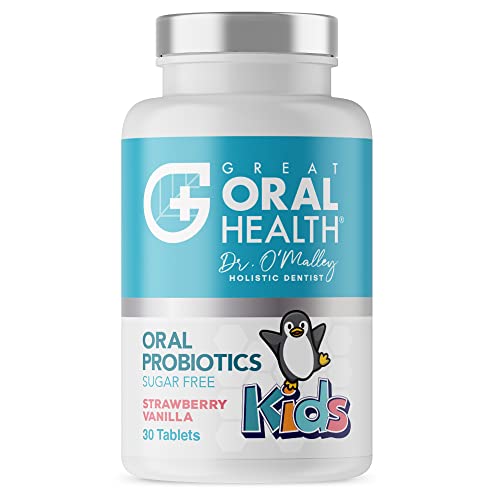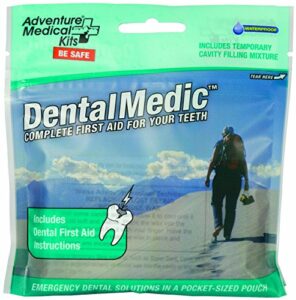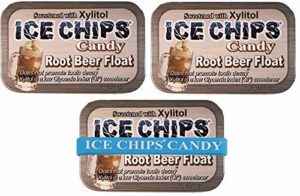In this step-by-step guide, we will explore the importance of teaching children about dental check-ups and how to do so effectively. Our goal is to help parents and caregivers understand the significance of regular oral health exams and provide practical strategies to educate children about maintaining a healthy smile.
Promoting Healthy Smiles for Little Ones
Start with age-appropriate language
Use simple and engaging language when explaining the importance of dental check-ups to children. Start by using words that they can easily understand and relate to. Explain that going to the dentist is like going to a special doctor who takes care of their teeth. Tell them that just like they brush their teeth every day, it is also important to visit the dentist regularly to make sure their teeth are healthy and strong. Use examples and visuals to help them visualize the process, such as showing them pictures of a dental chair and the different tools used during a check-up.
Avoid using complex medical terms that may confuse children. Instead, use words that are familiar to them. For instance, instead of using the word “cavities,” you can say “little holes in their teeth.” Instead of “x-rays,” you can say “special pictures to see inside their mouth.” By using language that is simple and relatable, children will be better able to understand why dental check-ups are important and will be more likely to feel comfortable and at ease during their visits.
Use visual aids
Utilize visual aids to enhance children’s understanding of concepts by incorporating pictures, diagrams, or videos into their learning experience. Visuals help children grasp abstract or complex ideas more easily, making the learning process enjoyable and memorable. Here are some steps to effectively use visual aids:
- Choose appropriate visuals: Select visuals that align with the topic and learning objectives. For example, use a picture of different animals to teach children about biodiversity or display a diagram illustrating the water cycle.
- Ensure visibility: Make sure the visuals are clear, large enough to be seen by all children, and placed at an appropriate height. Consider using a projector, whiteboard, or poster to display the visuals.
- Explain and discuss: Provide an explanation and encourage discussion around the visual aids. Ask questions related to the visuals to stimulate critical thinking and engage children in active learning.
- Reinforce key points: Highlight important information or key points on the visual aids. Use arrows, circles, or labels to draw attention to specific elements and facilitate comprehension.
- Use a variety of visuals: Incorporate different types of visuals to cater to children’s diverse learning styles. For example, use videos to demonstrate scientific experiments or display pictures to illustrate historical events.
Remember to keep the visuals simple, uncluttered, and relevant to avoid overwhelming children. By utilizing visual aids effectively, we can create a more engaging and interactive learning environment that promotes better understanding and retention of knowledge.
Tell stories and use examples
Share stories or examples of children who had positive experiences during dental check-ups. This can help alleviate any fears or concerns they may have.
When discussing dental check-ups with children, it can be helpful to share stories or examples of other children who have had positive experiences. For example, you can tell them about Sarah, a 7-year-old girl who was initially nervous about going to the dentist. However, Sarah’s dentist made her feel comfortable by explaining each step of the check-up and using gentle tools. Sarah ended up having a great experience and even received a sticker as a reward for her bravery.
Another example is Alex, a 5-year-old boy who had a dental check-up for the first time. Alex’s dentist showed him a picture book with colorful illustrations of teeth and explained how important it is to take care of them. The dentist made the check-up fun by counting Alex’s teeth and letting him choose a flavored toothpaste for his cleaning. Alex left the dental office feeling happy and proud of taking care of his teeth.
By sharing stories like these, you can help children feel more at ease and less anxious about their own dental check-ups. It shows them that visiting the dentist can be a positive and enjoyable experience.
Make it interactive
Engaging children in interactive activities is a great way to make the learning process more enjoyable and immersive. There are several interactive techniques that can be employed to keep children interested and engaged. Here are a few ideas:
- Role-playing: Encourage children to take on different roles, such as being a dentist or a patient, and act out a dental check-up scenario. This helps them understand the process and learn about oral hygiene in a fun and interactive way.
- Puppet shows: Use puppets to create a story or skit that revolves around dental health. The puppets can demonstrate proper brushing techniques, discuss the importance of dental check-ups, or even share funny anecdotes related to dental care. This visual and interactive approach will capture children’s attention and make the learning experience memorable.
- Games: Introduce games that simulate dental check-ups or teach oral hygiene practices. For example, you can create a board game where children move along dental-themed spaces and answer questions about brushing, flossing, and dental health. This not only reinforces their knowledge but also makes learning enjoyable.
By incorporating these interactive activities into dental education, we can create an engaging environment where children actively participate, learn, and have fun.
Encourage questions
To create a safe and open environment where children feel comfortable asking questions about dental check-ups, it is important to establish a warm and welcoming atmosphere. Firstly, we can begin by greeting each child with a smile and using friendly and approachable language. This will help them feel at ease and more likely to open up and ask questions.
When a child asks a question about dental check-ups, we should respond in a simple and age-appropriate manner. It is crucial to avoid using complicated dental jargon that may confuse or intimidate them. Instead, we can use relatable examples and visual aids to help explain the concepts. For instance, we can describe the dental check-up process as a “special cleaning for their teeth” or compare the dentist’s mirror to a “tiny magic mirror that helps the dentist see all the corners of their smile.
Furthermore, it is important to actively listen to the child’s questions and show genuine interest in what they have to say. This will not only make them feel valued but also encourage them to ask more questions in the future. We can maintain an open dialogue by asking follow-up questions or encouraging them to express any concerns or fears they may have. By doing so, we can address their worries and provide reassurance in a supportive manner.
In summary, creating a safe and open environment for children to ask questions about dental check-ups requires a warm and welcoming atmosphere, simple and age-appropriate explanations, and active listening. By implementing these strategies, we can help children feel comfortable and empowered to ask questions, fostering a positive dental experience for them.
Lead by example
To demonstrate good oral hygiene habits, start by setting a positive example yourself. Children tend to learn best by observing and imitating the behavior of trusted adults. Here are some steps you can take to involve children in your own dental check-ups:
- Schedule your dental appointments and invite your children to come along. Let them see that regular check-ups are a normal part of maintaining oral health.
- Before your appointment, explain to your children what will happen during the visit. Describe the procedures and reassure them that it’s not something to be afraid of.
- Let your children accompany you into the examination room. This way, they can witness firsthand how a dental check-up is conducted and observe your calm and cooperative behavior.
- During the check-up, engage your children by asking them to listen to what the dentist or dental hygienist is saying. Encourage them to ask questions and be curious about the process.
- After the appointment, share your experience with your children and emphasize the importance of regular dental care. Talk positively about how good oral hygiene habits contribute to overall health and well-being.
By leading by example and involving children in your own dental check-ups, you can instill in them the importance of maintaining good oral hygiene practices.
Reward and reinforce
Acknowledge and reward children for their efforts in practicing good oral hygiene and attending dental check-ups. Positive reinforcement can motivate them to continue these habits.
To acknowledge and reward children for their efforts in practicing good oral hygiene, we can start by praising them for brushing their teeth regularly and properly. For instance, when they finish brushing, we can say, “Great job! You did an excellent job brushing your teeth today!” This simple act of acknowledgment can boost their self-esteem and make them feel proud of their accomplishments.
Additionally, we can create a reward system to motivate children to maintain good oral hygiene. For example, we can use a sticker chart, where children receive a sticker every time they brush their teeth and attend dental check-ups. Once they collect a certain number of stickers, they can exchange them for a small reward, such as a toy or a fun outing. This will give them something to look forward to and encourage them to continue practicing good oral hygiene.
Furthermore, we can also involve the dentist in the reward system. After a successful dental check-up, the dentist can give children a small prize or a certificate for their good oral health habits. This recognition from a dental professional can be highly motivating and reinforce the importance of regular dental visits.
In conclusion, acknowledging and rewarding children for their efforts in practicing good oral hygiene and attending dental check-ups can have a positive impact on their habits. By using praise, reward systems, and involving the dentist, we can motivate children to continue these habits and lay the foundation for a lifetime of good oral health.
Ensuring Lifelong Dental Health
In conclusion, teaching children about the importance of dental check-ups is vital for their long-term oral health. Throughout this guide, we have highlighted several key points to help you in this endeavor. By starting early, using age-appropriate language and techniques, and leading by example, we can instill in children the significance of regular dental visits. By doing so, we are setting them up for a lifetime of healthy smiles and overall well-being. Let us prioritize dental check-ups for our children and ensure that they understand the value of maintaining good oral health.























